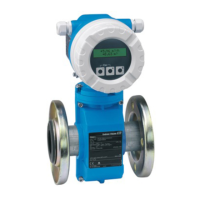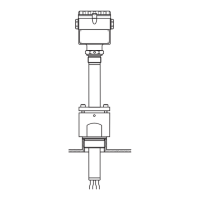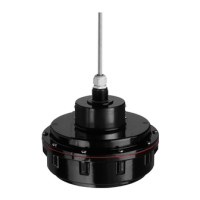Turbimax CUS51D Operation
Endress+Hauser 35
Calibration of the sensor
A0020487
33 Immersing the sensor
Preparing the sensor for calibration:
1. Clean the optical components (windows) of the sensor with water and a brush or
sponge.
2. Place the sensor into the calibration vessel.
3. The sensor must be placed in the sample at an angle, not vertically. → 33, 35
This prevents air bubbles from adhering to the windows.
Observe the following:
• Sensor LEDs are directed at the center of the calibration vessel.
• The minimum distance of the sensor to the vessel wall is 10 mm (0.4 in).
• The distance to the vessel floor is as large as possible. The sensor must be immersed in
at least 10 mm (0.4 in) of the medium, however.
‣
Secure the sensor in this position (ideally using a laboratory stand).
A0030900
34 Positioning the sensor. Dimensions: mm (in)
1 Beam direction of LEDs
2 LEDs
Note the following during calibration:
• The calibration points should cover the complete measuring range.
• During calibration, ensure that the medium is well homogenized (use a magnetic
stirrer).
• Determine the laboratory measured values with utmost care (the quality of the
laboratory measurement has a direct influence on the accuracy of the sensor).
• Apply maximum precision when dosing volumes for the sample and the dilution water
(use a graduated cylinder).
• Air bubbles on optical components significantly interfere with the calibration result. For
this reason, remove air bubbles before every calibration action.

